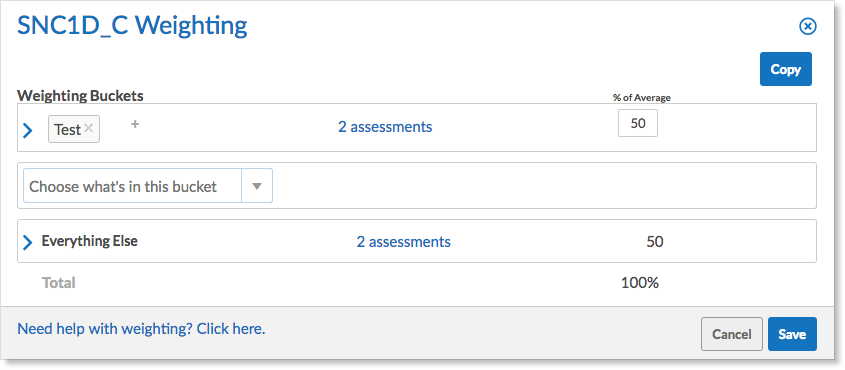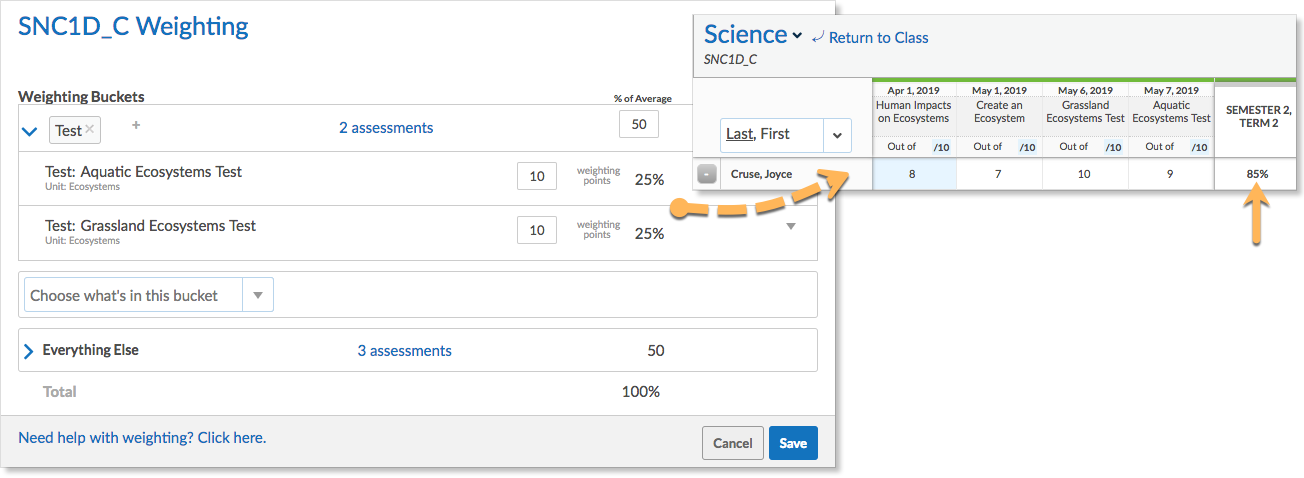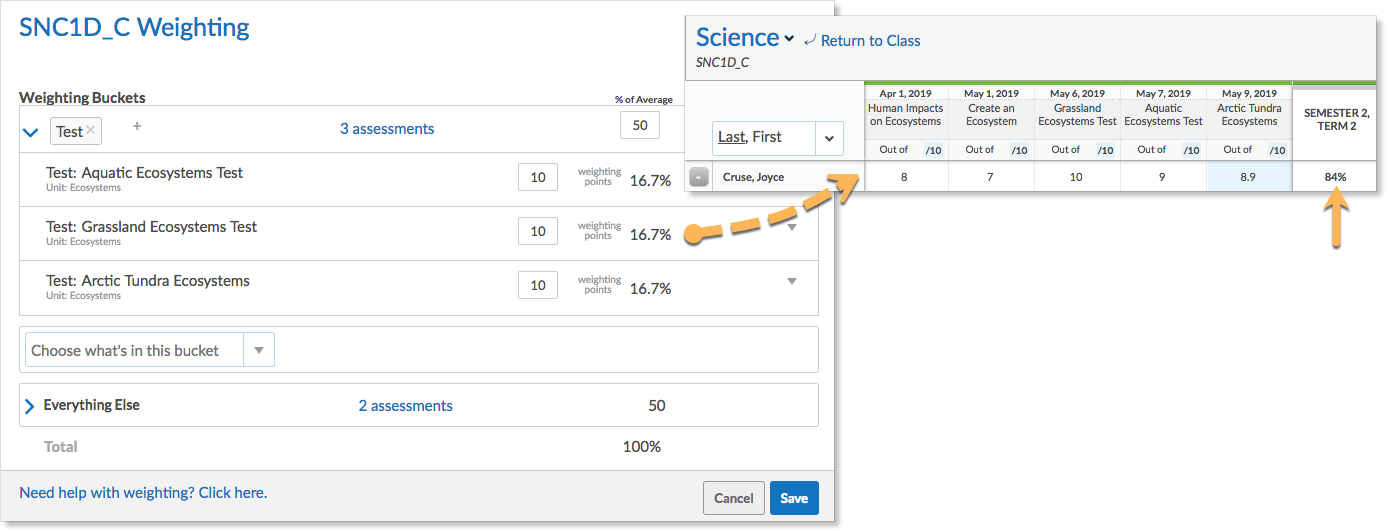When this happens it can be confusing, but it doesn’t mean something is wrong. Here’s what’s going on:
Edsby gives teachers the ability to use weighting to define what percentage of your overall grade each assessment type is worth. For example, a teacher could define that tests are worth 50% of your overall grade, and everything else (homework, final exam, quizzes, labs, etc.) are worth 50%, for a total of 100%. On top of that, each individual assessment can have its own weighting within each “weighting bucket”. Just because you’ve written two tests doesn’t mean each one is worth 25% of your final grade. The teacher could have set one test to be “worth” more than the other.
In an example where tests are worth 50% and everything else is worth 50%, here’s what the teacher’s weighting looks like on their side in Edsby:
Your overall average is calculated by first determining your average for all tests (and remember, not all tests necessarily carry the same weight, so it’s not as simple as adding up the averages and dividing by the number of tests you’ve written). That number is then multiplied by 0.5, as “tests” contribute 50% of your overall average. All of your other assessments are likewise averaged out and multiplied by 0.5. Those two values are then added together to calculate your overall average.
Let’s use some actual numbers here to make this more clear: It’s early in the semester. So far, you’ve had a homework assignment, a quiz and two tests graded and shared in Edsby. Your grades are:
Homework Assignment 1: 70%
Quiz 1: 80%
Test 1: 100%
Test 2: 90%
For the sake of simplicity, we’ll assume all assessments are weighted equally within their respective buckets, meaning each assessment is worth the same as the other assessments in that bucket. In that scenario, your overall average is calculated by averaging the homework assignment and the quiz then multiplying by .5, averaging the two tests and multiplying by .5, and then adding those values together.
Your “Everything Else” average is 75%: (70% + 80%) / 2. This 75% average is worth half of your overall average in the class, or 37.5.
Your Test average is 95%: (100% + 90%) / 2. This 95% average is worth half of your overall average in the class, or 47.5.
Your overall average is 37.5 + 47.5, which is equal to 85%. This value is what you see in Edsby as your current grade for this class. Here it is from the teacher’s perspective:
A week passes, and you’ve written a third test. The teacher grades it and shares it, and you’ve done very well – 89%. But wait! Your overall average dropped from 85% to 84%! How is that possible? Let’s go back to the math.
Your “Everything Else” average hasn’t changed. You still have two assessments in that bucket with a 75% average. That bucket is still contributing 37.5 to your overall average in the class.
The “Test” bucket, however, now has a third assessment in it. Your Test average is now 93%: (100% + 90% + 89%) / 3. This 93% average is still worth half of your overall class average, or 46.5.
Your new class average is now 37.5 + 46.5 = 84%. This is now the value you see as your overall average in the class. Here it is from the teacher’s perspective:
As more assessments are added to a weighting bucket, each assessment contributes a smaller amount to the total average of that bucket. So, despite receiving an 89% on your most recent test, your overall average has dropped from 85% to 84%, because that 89% actually lowered your average in the “test” bucket from 95% to 93% and the tests with the higher grade are now contributing less to the average.
Here’s the takeaway: when you receive a grade for an assessment, what matters is how that grade compares to your other assessments in the same weighting bucket. If it raised your average in that bucket, your overall average will go up. If it lowered your average in that bucket, your overall average will go down. By how much? It depends on how significantly your average changed within that bucket and how much that bucket contributes to your overall average.
The Edsby “My Work” link for each class shows the weighting buckets your teacher has set up and your up-to-the-minute average in each, which helps make this more transparent. However, if you’re still unsure why your overall average is what it is, speak with your teacher and ask them to explain how they’ve set up the weighting for your assessments.


